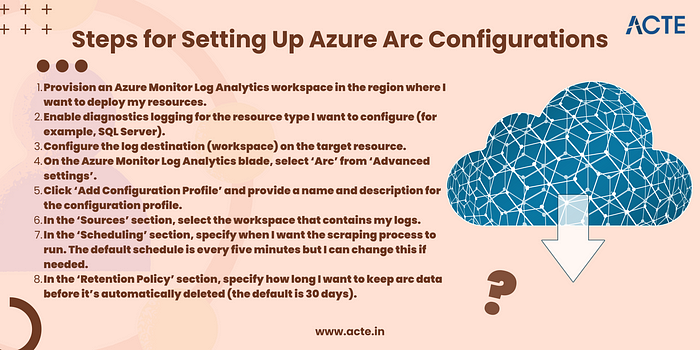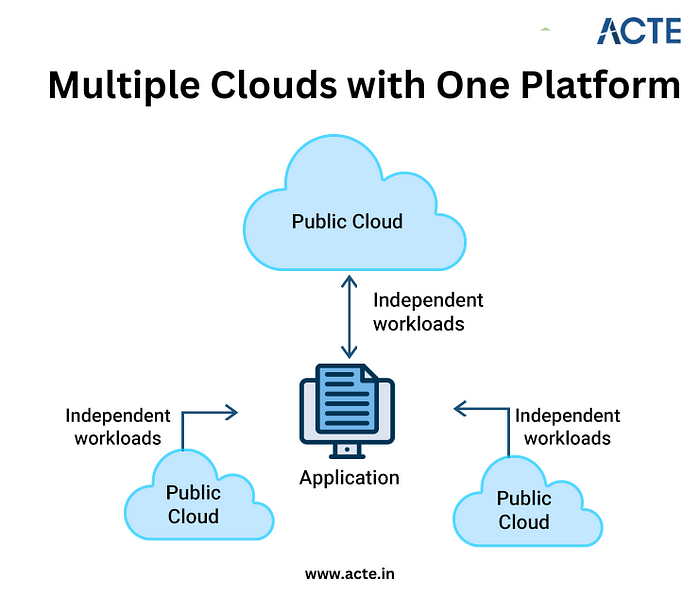Hybrid Cloud Strategies with Azure Arc: My Practical Insight
Are you ready to unlock the true potential of hybrid cloud strategies? Look no further than Azure Arc, the game-changing solution that promises seamless integration and unparalleled flexibility. From streamlining operations to enhancing security, Azure Arc has revolutionized the way organizations harness the power of both on-premises and cloud environments. In this blog post, I’ll be diving into my practical insights on leveraging Azure Arc for your hybrid cloud journey. So buckle up as we explore the endless possibilities and unveil a new era in hybrid computing!

Introduction to Hybrid Cloud Strategies with Azure Arc
I’m under pressure to digitally transform in order to remain competitive. I’m looking to the cloud as a way to accelerate this transformation. Not all workloads, meanwhile, are appropriate for the public cloud. Some may require on-premises or edge computing due to data sovereignty or local regulations. Others may need to be kept on-premises due to performance requirements.
Hybrid cloud strategies allow me to keep some workloads on-premises or at the edge while still taking advantage of the agility and scalability of the public cloud. Azure Arc is a tool that can help me manage and monitor my hybrid cloud deployments. In this blog post, I will share my practical insight into using Azure Arc for my hybrid cloud deployments.
Benefits of Azure Arc Adoption & Challenges in Implementing it
In recent years, using the cloud has grown in popularity among organizations of all sorts. One of the major advantages of cloud computing is its scalability; I can quickly add or remove capacity as needed without making a long-term commitment. Azure Arc is a hybrid cloud solution that allows me to take advantage of the benefits of the cloud while still maintaining control over my data and applications.
There are several benefits to adopting Azure Arc, including:
- Increased flexibility and scalability: As mentioned above, one of the major advantages of Azure Arc is its scalability. I can easily add or remove capacity as needed, without making a long-term commitment. This can help me save money on IT infrastructure costs, as well as ensure that I have the necessary resources available when I need them.
- Improved disaster recovery: Another benefit of Azure Arc is improved disaster recovery capabilities. With this solution in place, I can quickly recover from outages or disasters with minimal downtime. This can help keep my business up and running even in the event of a major problem.
- Enhanced security: Security is always a major concern for me, especially when it comes to sensitive data. With Azure Arc in place, I can take advantage of enhanced security features such as encrypted data storage and multi-factor authentication. This can help give me peace of mind knowing that my data is safe and secure.
- Lower maintenance costs: Maintaining on-premises IT infrastructure can be costly and time-consuming. Azure Arc helps me lower maintenance costs by simplifying resource management and automating tasks.
Understanding the Necessary Requirements for Azure Arc Usage
Azure Arc is a cloud management platform that enables me to optimize my hybrid cloud deployments. It provides a unified control plane for managing resources across on-premises, edge, and multi-cloud environments. Azure Arc also simplifies the process of integrating Azure services with on-premises and third-party solutions.
In order to use Azure Arc, I must first have an Azure subscription. I must also have the desired Azure Resource Manager (ARM) template or Resource Manager package deployed in my environment. Azure Arc uses these templates or packages to deploy and manage resources in the target environment.
Once the necessary requirements are met, I can begin using Azure Arc to manage my hybrid cloud deployments. I can use the platform to provision and manage resources, monitor activity and usage patterns, set policies and governance controls, etc. Additionally, I can use Azure Arc to connect my on-premises or third-party solutions with Azure services. This allows me to take advantage of the many benefits that Azure has to offer, such as scalability, high availability, security, and so on.
Steps for Setting Up Azure Arc Configurations
Azure Arc is a cloud service that enables me to manage and monitor my resources whether they’re running on Azure, on-premises, or in other clouds. With Azure Arc, I can use the same tools and portal experiences I’m used to in Azure to centrally govern all my infrastructure.
Setting up an Azure Arc configuration is simple and straightforward. I just need to follow these simple instructions:

9a. If I want to scrape data from multiple workspaces, I can repeat steps 5–8 for each workspace.
Troubleshooting Common Issues Related to Hybrid Cloud with Azure Arc If I’m working with hybrid cloud and Azure Arc, there are a few common issues I may run into. Here’s how to troubleshoot them:
- I can’t see all of my resources in the Azure portal.
- Make sure that I’ve selected the correct subscription in the Azure portal. If I’m still not seeing all of my resources, check the resource provider status page to see if there are any known issues.
- I’m getting errors when trying to deploy resource group templates.
- When deploying resource group templates, make sure that the template includes all required resources for Azure Arc enabled resource providers. Consult the Azure Resource Manager documentation for further details.
- My hybrid cloud app isn’t running correctly.
- If I’m having trouble with a hybrid cloud app, first check the logs to see if there are any error messages. Then, try redeploying the app using a different approach (for example, using Azure CLI or PowerShell instead of the Azure portal).
Unifying Multiple Clouds with One Platform:
A Comprehensive Overview Azure Arc is a cloud management platform that enables me to unify multiple clouds with one platform. Azure Arc provides a comprehensive overview of my resources and allows for central management and policy enforcement across all of my Azure subscriptions. Azure Arc also provides integrated security and compliance features to help me secure my data and meet regulatory requirements.

Best Practices for Utilizing Hybrid Cloud Strategies with Azure Arc
When it comes to hybrid cloud strategies with Azure Arc, there are a few best practices that I should keep in mind. For starters, I should make sure that I have a clear understanding of my workloads and how they need to be supported. I should also have a clear picture of my network topology and how the different components will interact with each other. Additionally, it’s important to have a plan for data security and management, as well as monitoring and logging. By keeping these things in mind, I can be sure that my hybrid cloud strategy with Azure Arc is as effective as possible.
All things considered, Azure Arc is an impressive offering from Microsoft that can help me realize the potential of hybrid cloud technology. By leveraging my existing infrastructure while taking advantage of the benefits offered by public clouds like Azure, I can enjoy features such as greater scalability and improved flexibility to meet changing needs. Whether I need basic access control or more advanced policies to manage my distributed systems, my practical insight on using Azure Arc for my hybrid cloud strategy shows how powerful this platform is in streamlining and optimizing cloud operations for various enterprises. I suggest looking into the services provided by ACTE Technologies, which offers thorough Microsoft Azure training. This course builds a solid academic foundation while covering important subjects. To improve your Azure abilities, think about enrolling in accredited Microsoft Azure training classes. Please don’t hesitate to get in touch with me if you have any questions or need assistance navigating the Azure ecosystem.


Comments
Post a Comment